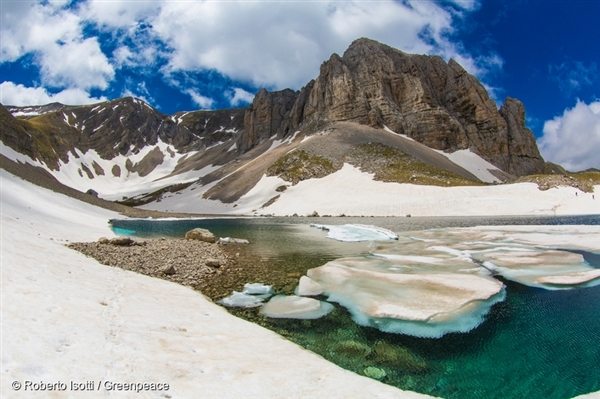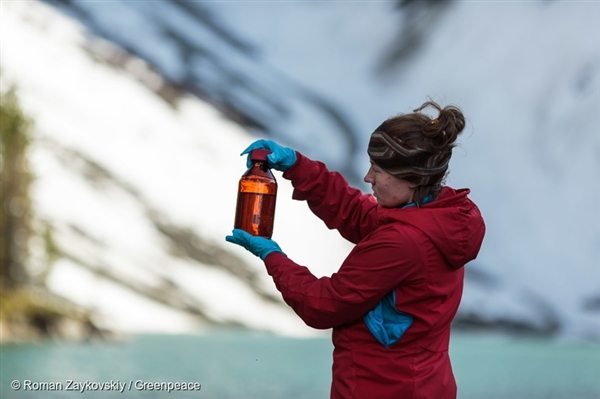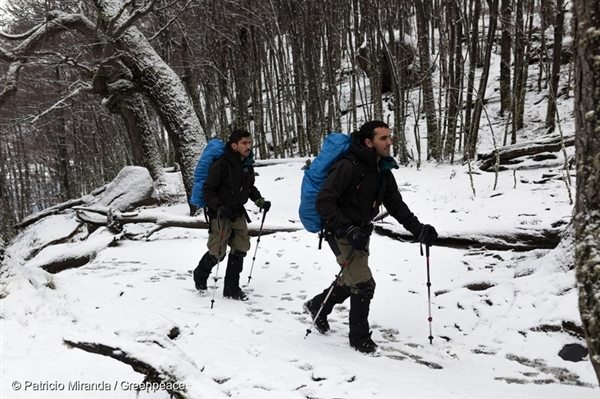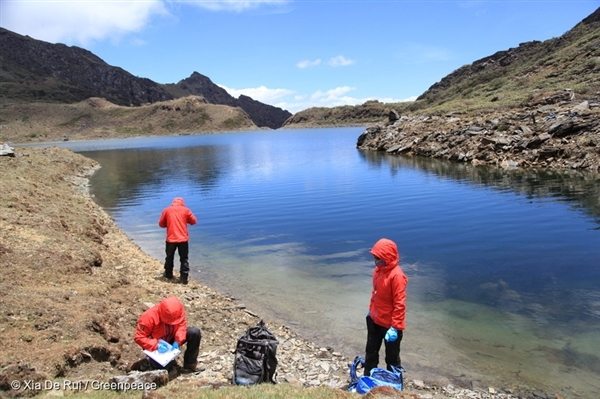Blogpost – Gabriele Salari is the Communications Lead for the Detox Outdoor project at Greenpeace Italy.
Who hasn’t dreamt of being in the untouched wilderness of the Himalayas, the Andes or the Altai Mountains, hiking or climbing in these incredible natural landscapes? Nowhere else on earth is the snow purer or the water cleaner than in a clear mountain lake far from civilisation. So why have we found persistent and hazardous chemicals in such places?
In May and June 2015, eight Greenpeace teams led expeditions on three continents to the most beautiful and seemingly unspoilt regions of the world. We collected water and snow samples to test them for per- and poly-fluorinated chemicals (PFCs). Sadly, we found them in snow samples from all the remote areas that Greenpeace teams visited as our Footprints in the snow – Hazardous PFCs in remote locations around the globe report shows. With this global investigation we want to draw attention to a long-standing but little-known and certainly unsolved problem: the global presence of invisible but very persistent and hazardous chemicals in our environment.

PFCs are used in many industrial processes and consumer products. The outdoor industry uses PFCs to make products waterproof and dirt-repellent. Once released into the environment, PFCs will remain for many years and are dispersed across the entire planet. Some PFCs can cause harm to the reproductive system, promote the growth of tumours and affect hormones.
The outdoor sector stands for freedom and love of nature: ‘the great outdoors’. It uses images of beautiful mountain landscapes, majestic forests, freshly fallen snow and clean rivers to market its products. These positive images are heavily promoted by outdoor brands and have brought strong growth in recent years. It’s ironic to think that companies who depend on nature for their business, willingly release dangerous chemicals into the environment.
Consumers are often prepared to pay hundreds for a high-tech waterproof jacket, promoted with images of deep snow skiers or fearless climbers, despite the fact that most customers are not high-performance athletes, but city dwellers who just need a decent anorak for a bike ride or an autumn walk. Children’s clothing is also sold with ‘high-performance’ finishes – although it is more often used in the rain and mud, in the sandpit or in the playground. Nevertheless, the industry has made it its mission to ensure that the clothing they make can resist the most extreme weather conditions that ‘the great outdoors’ can throw at us, and that represents the brands’ biggest selling point. This unfortunately results in an increasing chemical burden, especially with PFCs.
The good news for outdoor enthusiasts is that safer alternatives to PFCs exist and some small brands already sell PFC-free gear. All of our sampling teams used PFC-free clothing on their expeditions, and were very happy with the equipment’s performance – even in harsh weather conditions and at over 5,000 metres on Haba Snow Mountain in China.
30,000 of you voted for which products you wanted us to test for PFCs. The results will be in very soon, and they don’t look good for the planet or for our health.
The outdoor sector has certainly made progress in terms of environmental protection. But it has so far neglected the need to replace the problematic chemicals used for waterproofing in membranes and coatings. Most outdoor brands have sidestepped the repeated warnings from Greenpeace’s Detox campaign.
Now we’re going to change that. It’s up to everybody – nature lovers, climbers, skiers, walkers and city dwellers – to join our movement on and ask the outdoor sector to get rid of hazardous chemicals altogether.
So far over 66,000 people have signed the manifesto, challenging outdoor brands to Detox and stop the spread of PFCs across the planet. Together, we can only get stronger.




